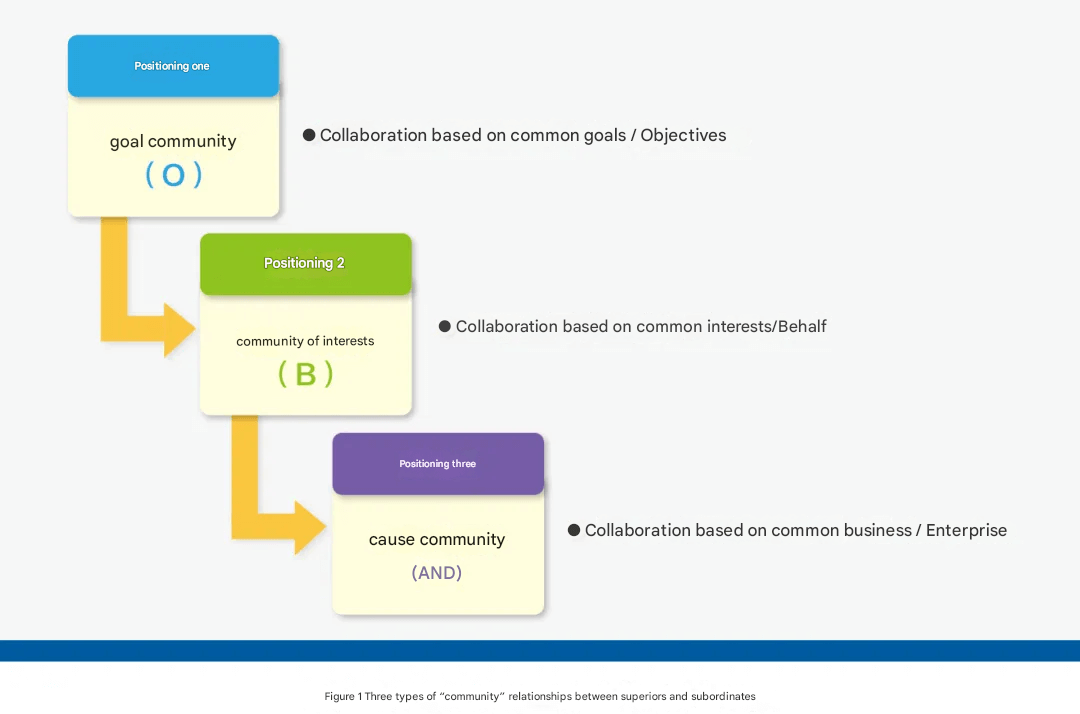This article primarily discusses methods to improve work efficiency by avoiding ineffective meetings and introduces four important types of company meetings: the annual goal breakdown meeting, the monthly business analysis meeting, the monthly plan breakdown meeting, and the weekly plan review meeting.

Employees are often overwhelmed by various meetings, such as impromptu brainstorming sessions, meetings announced at the end of the day, and so-called "brainwashing sessions" disguised as corporate culture dissemination. Sometimes, people are forced to attend meetings during the day and work overtime at night.
From a company’s perspective, however, holding effective meetings is crucial because they are key to implementing plans.
In fact, it’s not the meetings themselves that people dread, but rather the inefficient and time-wasting ones.
Many articles have already discussed how to organize efficient meetings from the perspective of the meeting organizer. But since meetings are not only a form of communication but also a critical step in advancing strategy, I will explore which standard meetings a company should hold each year and how to ensure those meetings are effective.
1. What is the cost of holding meetings?
Ren Zhengfei once said at an internal meeting: Constant meetings are a manifestation of immature management. "A lot of people come to the meeting, and irrelevant people have to attend the meeting. In this way, our grain production will be less, so the contribution will be small."
Indeed, Chinese people like to hold meetings very much. Many leaders can be called "chairmen" and hold meetings almost every day. But have you ever calculated how many days a company spends on meetings every year?
There are 365 days in a year, and the real working days are about 220 days. How many days of these 220 days do we have meetings? You can count on your fingers. We usually think:
The cost of attending a meeting = average daily wage per person × number of people × 4
Why is this formula listed? Because wages usually account for 20% to 25% of output value or sales. If a company has an annual revenue of 100 million, wages will account for about 10 or 20 million. If 30 people hold a meeting, without counting anything, it will cost 80,000 yuan a day.
Therefore, the cost of holding a meeting is extremely high.
How many days do companies hold meetings on average in a year? Let's start with the necessary meetings.
According to the standard of three days for annual meetings, one day for monthly meetings, and half a day for weekly meetings, it is about 20 days. Add other scattered special coordination meetings and it will be four days. In principle, the number of meeting days in a year will not exceed 30 days. An efficient organization has so many standard meetings.
But now many companies are facing the problem that the time spent on meetings is far more than 30 days, and it can be said that most of the time is spent on meetings.
Why is this the case? Why do companies usually hold so many coordination meetings, and most of them are initiated on an ad hoc basis? My answer is that the standard meetings are not held in place, and a large number of fragmented meetings are held repeatedly and repeatedly.
If the standard meetings cannot produce results and cannot effectively guide actions, a large number of other meetings will be needed to fill in.
Therefore, our focus is to hold key meetings well.
2. What are the key meetings of the company?
If meetings must be held, which meetings should we hold?
We call them the "four major meetings":
The first is the annual goal breakdown meeting, the second is the monthly business analysis meeting, the third is the monthly plan breakdown meeting, and the fourth is the weekly plan review meeting.
Simply put:
The annual meeting is about strategic consensus, key initiatives, and annual budget.
The monthly meeting is about problem analysis, strategy analysis, and plan adjustment.
The weekly meeting is about starting, stopping, and continuing work.
The annual goal breakdown meeting will take about 2 to 3 days, but people usually spend at least a week and at most a few months to prepare. The monthly business analysis meeting and the monthly plan breakdown meeting take about 1 to 2 days per month. Of course, some companies with fewer levels usually hold these two meetings together. In addition, the weekly plan review usually takes half a day to a day. The weekly plan review meeting is very important and is a key link in implementing it.
1. Annual goal breakdown meeting
Generally, consensus is reached around five keywords: strategy, results, drive, strategy, and budget.
① Strategy. Clarify the strategic relationship. The strategic relationship is who drives whom. For example, does sales drive production, or does production drive sales, or does the market drive sales, or does sales drive the market? This is called a strategic relationship.
② Result. The result of the department is to sort out the business model of the department, that is, each department should regard itself as an outsourced team hired by the company, think about what products it provides, who the customers are, delivery standards, etc., and make clear definitions for this.
③ Drive. Design a driving formula, select driving factors, and measure driving data. Why do we need to make this driving formula? Because the department's business model changes, the driving formula and driving factors will change accordingly.
④ Strategy. When the driving factors change, the strategy will change accordingly. We need to analyze the causes, combine strategies, and formulate plans around the problem.
⑤ Budget. When the plan changes, the budget will change accordingly.
But in this process, the problem that many people will think of is that there is often a lack of data in the initial year, so there is no way to start. But we always have to have an initial year, first solve the problem of whether there is, and then solve the problem of whether it is accurate.
Therefore, in the first and second years, do not dwell on whether the data is accurate or not. Inaccurate data is better than no data. Let's start with whether or not we have data.
2. Monthly business analysis meeting
Mainly around three keywords: problems, causes and strategies.
First, find out the problem. When holding a monthly business analysis meeting, the first thing is to benchmark the vision value, current value and planned value, and then find out the deviation. The vision value is the data that we hope to achieve at the end of the year, the current value is the actual value, and the planned value is the data that we hope and plan to achieve this month.
Second, analyze the cause. After finding the key problem, start analyzing the cause, find the boundary, find the data, and find the cause.
Third, discuss the strategy, discuss and optimize the strategy based on the cause, and finally form a strategy combination.
In principle, the monthly business analysis meeting is a seminar, and corporate managers must not turn it into a one-man show. Since it is a seminar, the form, strategy, means and tools of the meeting are different.
First of all, it must be an open seat, not a round table. It is best to bring a whiteboard, or a large white paper, three colors of whiteboard pens, and sticky notes, etc. All the tools related to brainstorming must be prepared to improve the efficiency of the meeting.
If the monthly business analysis meeting is opened as a "one-man show", it will not have any practical effect. Because more than 90% of the time in the meeting is used for cause and strategy analysis, rather than just for publicity, so an atmosphere of discussion should be created.
3. Monthly plan decomposition meeting
The monthly plan decomposition meeting will also revolve around three keywords: problem, strategy and plan.
In addition to defining the problem through data comparison, it is also necessary to publicize to the following employee team why this strategy should be optimized and what results this strategy should achieve? Then start to decompose the steps of the strategy, describe the output, decompose it to people, decompose it to time, and then form a plan.
Risk analysis should be done for key tasks, and plans should be made, and the signs of starting should be determined. In the monthly plan decomposition meeting, after each plan step is written, you must repeatedly ask yourself, after we have completed these plans, can this goal be achieved? Can the previous problem be solved?
If you are unsure, it means that there are risks. All these risk points should be listed and risk assessment should be carried out.
4. Weekly meeting
The weekly meeting is to answer what should be done last week and what was actually done? What should be started next week? What should be stopped and what should be continued. Every team should sort out the plan every week.
When it comes to the weekly plan, you can no longer mention "the plan cannot keep up with the changes". In principle, the plans arranged in the weekly plan should be achievable. If you fail to do it, it can only mean that you did not go all out. The weekly plan is to implement and do what you say.
The weekly meeting is the last mile for the implementation of the annual plan. Many times, the so-called weak goal achievement is reflected in the "last mile". As a manager, you must strictly keep an eye on the "weekly plan" and track it to the end.
The company needs to form a set of standard systems for all meetings organized. What meetings should be held every year, every month, every week, and every day, and even how to host and what records should be made, etc., must be standardized and become routine actions.
3. How to evaluate the effectiveness of the action plan?
The effectiveness of the meeting depends largely on the effectiveness of the plan.
How do we evaluate the effectiveness of the action plan?
If you are a department manager, when you see the plans written by your subordinates, you only need to ask one question: After all the above plans are completed, can the previous problem be solved?
The other party will usually say: It should be okay, but...what if the employees are not capable enough, what if the competitive environment changes...
You can continue to ask: What will you do if the competitive environment changes? This is forcing employees to make risk-based plans.
Because many people often attribute the failure of the plan to one sentence during the execution process after the plan is completed: "The plan cannot keep up with the changes." This is not that the plan cannot keep up with the changes, but that the changes are not fully considered in the plan, which means that the plan is not sufficient.
Have we conducted sufficient risk assessment? Risk assessment includes two aspects:
First, assess the possibility of risk occurrence, that is, the probability of occurrence, and score it based on 1-10 points. The higher the score, the greater the possibility of occurrence.
Second, once the risk occurs, how strong is the lethality to my problem solving? What is the score from 1-10? The greater the lethality, the higher the score. Then multiply these two scores, one is the probability score, the other is the lethality score, and sort by product. The highest score is the biggest risk point.
The biggest risk point, of course, needs to make a plan. For example, if you want to hold an outdoor event for 200 people, and there is still half a month left, what is its biggest risk?
One of the risks is rain. Is the probability of rain high? You need to compare the probability of rain in this season and this area on this day in the past 5-10 years.
In addition, once a heavy rain falls, how lethal will it be to this activity? Once you have formed a high risk level, it means that you must make a plan, such as a raincoat for each person, alternative indoor venues, etc. If there are no such plans, the risk is too great.
Therefore, in order to ensure the effectiveness of the plan, as a manager, you must repeatedly ask employees: After these plans are written, can they be guaranteed to be completed? Forcing employees to constantly revise and improve the plan, the whole process is to help them sort out their ideas, do a good job of process control, and take into account all possible accidents as much as possible.
But in real life, many leaders are good people and are easy to talk to at work. The employee said: Leader, please take a look at this plan. The leader said: Okay, let's do it first. But the most likely result is that the employee said: Leader, under your wise leadership, I didn't get my work done, and I have reported it to you.
This is because the leader's standards are too low.
4. More sweat in the monthly meeting, less embarrassment in the market
From a specific operational level, as a department head, how should you report in the monthly business analysis meeting?
It is recommended that the report content start with the following questions:
What result indicators will our department undertake around the company's strategic goals and this year's goals?
What are the process elements around these result indicators?
How much should be completed by the end of the year, and how much has been completed so far? Which ones have been exceeded? Which gaps are relatively large?
Around the problem of large deviations, we have analyzed the key reasons as follows. What strategies will we take to deal with this problem next?
Which colleagues will I arrange to do which specific work. If they can complete it on time, how much performance can they get, and what responsibilities will they bear if they cannot complete it?
In order to ensure the final result, what support will we apply for in terms of time, resources, manpower and material resources?
Such a report is complete, pointing to the strategy above and the specific plans and results below, and consistency should be maintained between last month, this month and next month.
After the department head reports, he will usually accept the challenge of the leader and colleagues. If he cannot answer quickly in a short time, it reflects that his thinking is unclear.
After answering these questions, the leader may ask a series of questions, and you have to withstand the test, such as:
What is the result you want to achieve in the future? Relative value or absolute value?
What is the reason for you to determine the process driving factor, and what research and measurement have you gone through?
What is the cause of this problem? What research and analysis have you done?
Is it caused by other reasons in a larger range?
Why do you say it is the best strategy, has it been tested and practiced?
Does the person responsible for execution have the corresponding ability?
If the key person in charge leaves, is there anyone who can take over?
What is the reason for evaluating employee performance in this way?
All of the above have been implemented, can you guarantee the completion of the set goals?
Faced with these questions, can we answer them?
How many people are trembling and stumbling at the beginning. That means we have not thought through the design of operations and management, and to put it bluntly, there is a lot of loss of control.
But it is a good thing that these problems have emerged, and one day we will be able to answer them fluently.
In the company, it is often not shameful to have unclear ideas. It is really shameful to have unclear ideas in front of customers. So internal meetings are training, don't worry about being embarrassed.
In the meeting, the more challenges we encounter and the more acute the problems, the more help it will be to our thinking. The more sweat we sweat in training, the less blood we bleed on the battlefield; the more embarrassment we have in the company, the less embarrassment we will have in the market.
If you have withstood this test, you can become a management expert.






